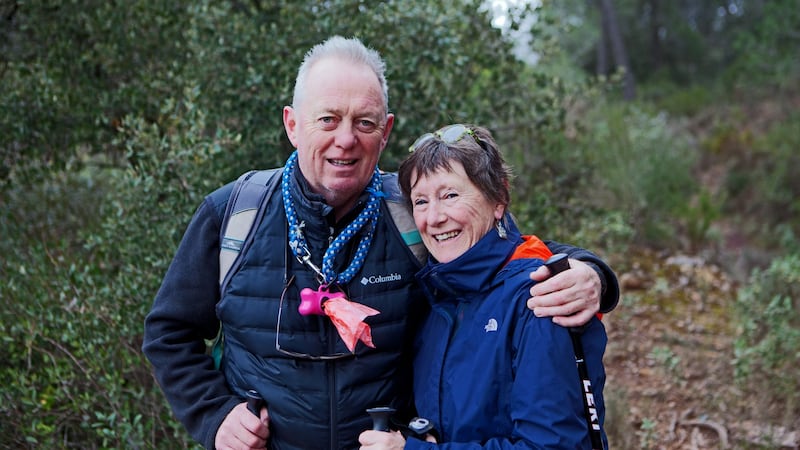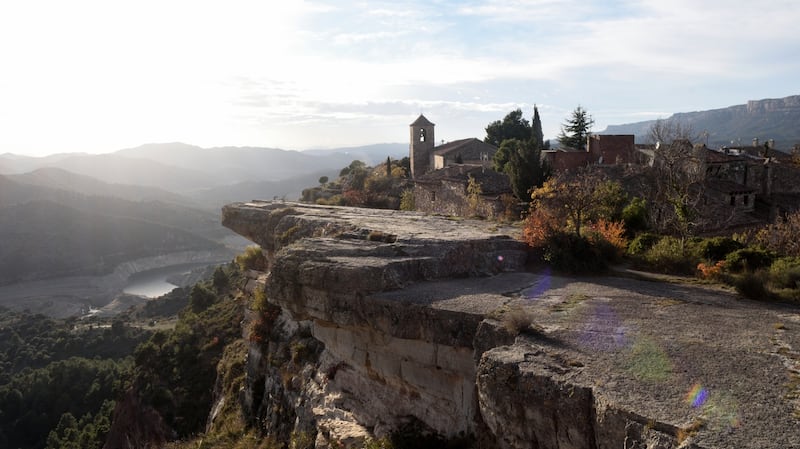Joan Gallagher and her husband John left Ireland in 2001 with their four sons and went to live in Sitges, Barcelona. Three months ago they moved again, just the two of them.
“We chose Falset in the Priorat/Montsant wine region for its proximity to our grandchildren. It has so many beautiful villages and it’s the capital town of this incredible region. We love walking and wine too so in a way we have found our Utopia.

"It has a population of nearly 3,000 people, which is similar in size to Boyle, where we used to live. We are enjoying village life and have started to learn Catalan. We bought the old dairy here in Falset which had fallen into ruin. We have just finished partially demolishing it and are about to build some tourist apartments in the building. We are going to organise walking, yoga/pilates and wine-tasting weekends."
Where is the first place you bring people to when they visit the Priorat ?
I bring them to the Hermitage of Saint Gregory in Falset. It was built in the 18th century, into the side of a beautiful red rock. The little church is the same colour and is literally built into the side of the mountain.
The top three things to do in the area that don’t cost money are . . .
1. The area has hundreds of walks through vineyards and olive groves, as well as mountain walks with amazing views of the more than 30 villages which constitute the Priorat/Montsant wine region.
2. A visit to the beautiful village of Miravet, which is situated on a wide bend of the River Ebro. It's not in the Priorat region, but only a few kilometres from Falset, which is the capital town of the region. It is dominated by a huge castle which was founded by the Moors and rebuilt by the Knights Templar. It's also a protected bird sanctuary with herons, cormorants and many species of birds and ducks.

3. Siurana is believed to be the third best place in the world for rock climbing, which brings thousands of people from all over the world here every weekend .
Where do you recommend for a great meal that gives the flavour of the Priorat?
Practically every village has a few restaurants that offer lunch for €10 for three courses, including the local wine. All feature local lamb, beef, sausage, pigs’ cheeks cooked in red wine, with a good selection of vegetarian food too. A lot of them cook their meat, fish and vegetables on a fire made from olive and vine clippings, which gives everything a unique flavour.
What should visitors save room in their suitcase for after a visit to the Priorat ?
Wine, cheese and cured meats. It’s famous for pottery, too, so maybe it would be possible to bring a little piece home. If you’re worried about the bottles breaking on the way home, the wine is also sold in boxes and it is of a very high quality too.
Where is the best place to get a sense of the Priorat’s place in history?
Head to the Cartuja de Escaladei at the foot of the Montsant mountains, where only a few years ago the ruins of the old monastery were excavated and where nearly 1,000 years ago the monks made the very first Priorat wine. It’s a huge complex of cloisters, the old church, refectory and a series of reconstructed cells where the monks lived. Scala Dei was a fully working monastery until 1835. The village of Scala Dei which is beside the monastery is where the now world-famous wine of the same name is made. joangallagher50@gmail.com
- If you'd like to share your little black book of places to visit where you live, please email your answers to the five questions above to abroad@irishtimes.com, including a brief description of what you do there and a photograph of yourself. We'd love to hear from you.










